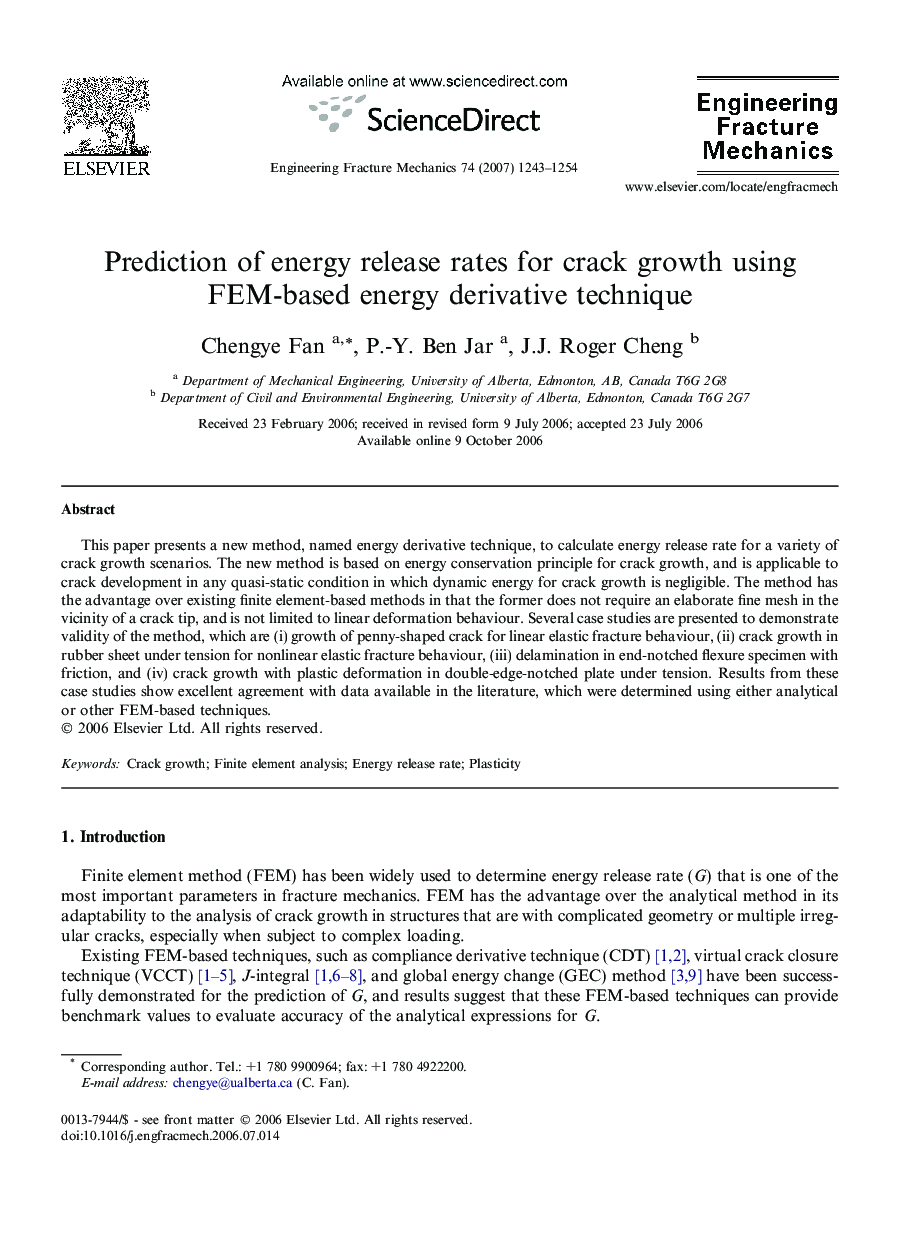| Article ID | Journal | Published Year | Pages | File Type |
|---|---|---|---|---|
| 775783 | Engineering Fracture Mechanics | 2007 | 12 Pages |
This paper presents a new method, named energy derivative technique, to calculate energy release rate for a variety of crack growth scenarios. The new method is based on energy conservation principle for crack growth, and is applicable to crack development in any quasi-static condition in which dynamic energy for crack growth is negligible. The method has the advantage over existing finite element-based methods in that the former does not require an elaborate fine mesh in the vicinity of a crack tip, and is not limited to linear deformation behaviour. Several case studies are presented to demonstrate validity of the method, which are (i) growth of penny-shaped crack for linear elastic fracture behaviour, (ii) crack growth in rubber sheet under tension for nonlinear elastic fracture behaviour, (iii) delamination in end-notched flexure specimen with friction, and (iv) crack growth with plastic deformation in double-edge-notched plate under tension. Results from these case studies show excellent agreement with data available in the literature, which were determined using either analytical or other FEM-based techniques.
